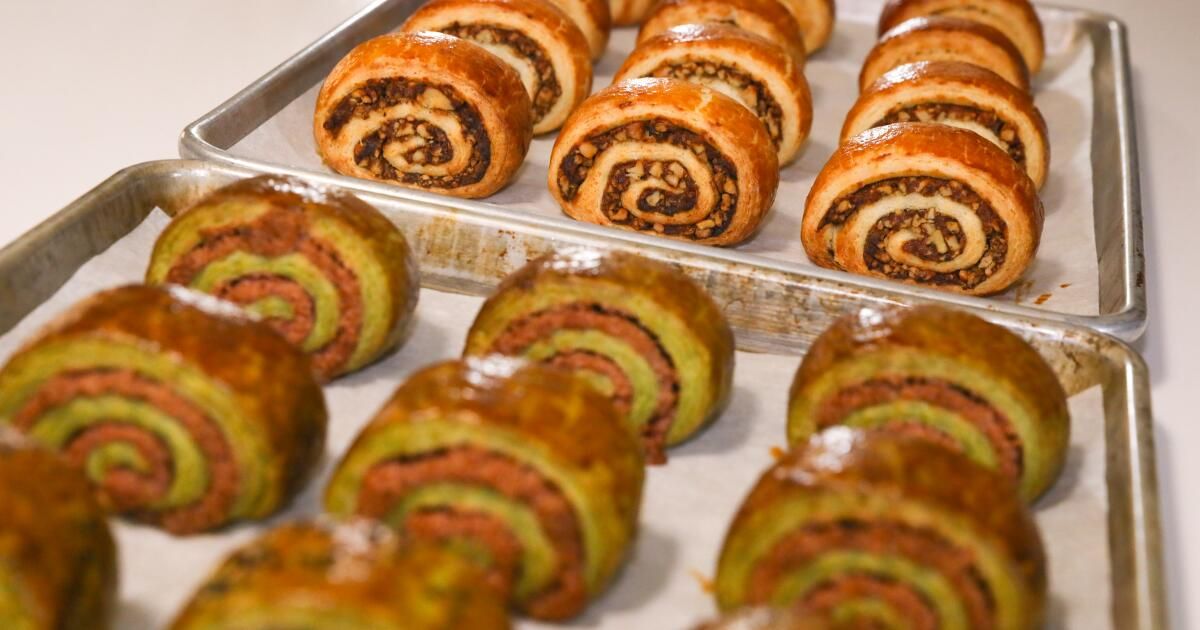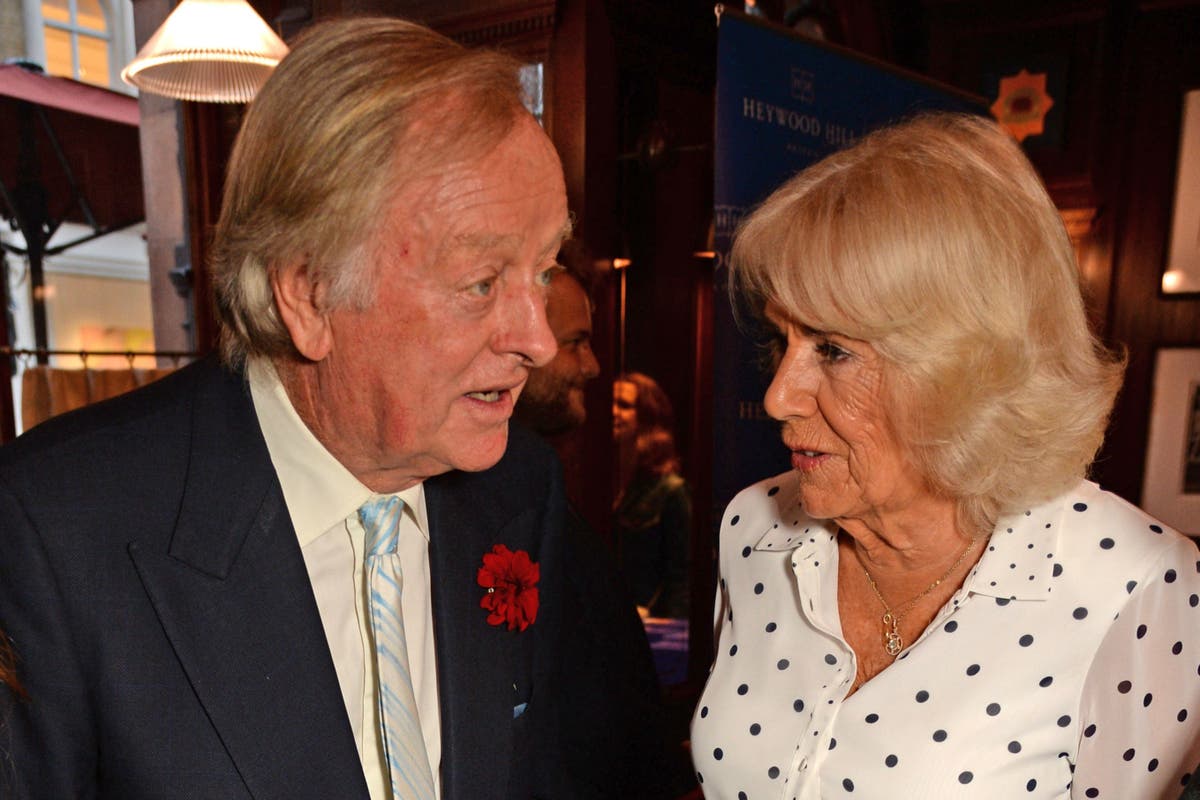In her family’s kitchen in Granada Hills, Kristine Jingozian, one of the founders of Rose & Rye Bakery, removes a tray of fresh nazook from the oven: the traditional Armenian flaky, rolled pastries that have a butter-and-sugar filling, fragrant. . with vanilla and burnished gold on top. The brown paper boxes would be carefully filled with nazook by the half and full dozen in preparation for the Armenian Christmas weekend, which takes place on Saturday, when families share sweets with relatives to celebrate the holiday.
While the batch cools, Jingozian begins rolling delicate gel-shaped rose “delicacies” onto sticks and placing them along with nuts into rounds of dough that he shapes into crescents, called lokumlu, much in demand on Christmas Eve. Armenian Christmas, to drink with cups of tea.
Flavors of Los Angeles meet Armenia: Rose & Rye’s nazook with fillings like classic vanilla, strawberry matcha, hazelnut chocolate, black sesame matcha, and brandied date and walnut.
(Mel Melcón/Los Angeles Times)
It’s one of the cookies Jingozian recovered from her grandmother’s old recipe book, reflecting influences from her years spent in Soviet Armenia, intertwined with her Syrian and Lebanese origins.
“I saw her making lokumlu throughout my childhood. When we decided to add it to the menu, she came and stayed with us, following our every move and making sure we did it correctly,” Jingozian recalls.
Los Angeles is home to one of the largest Armenian communities outside of Armenia, and dozens of bakeries throughout Los Angeles reflect its pastry tradition, culturally connected to Russia, Iran, Lebanon, France and beyond. To be Armenian is to belong to many places.
Rose & Rye is the story of one family’s refugee and immigration journey told through the pastries and tarts that many, like the Jingozians, adopted during displacement and changing political regimes, and perfected by testing hundreds of recipes.
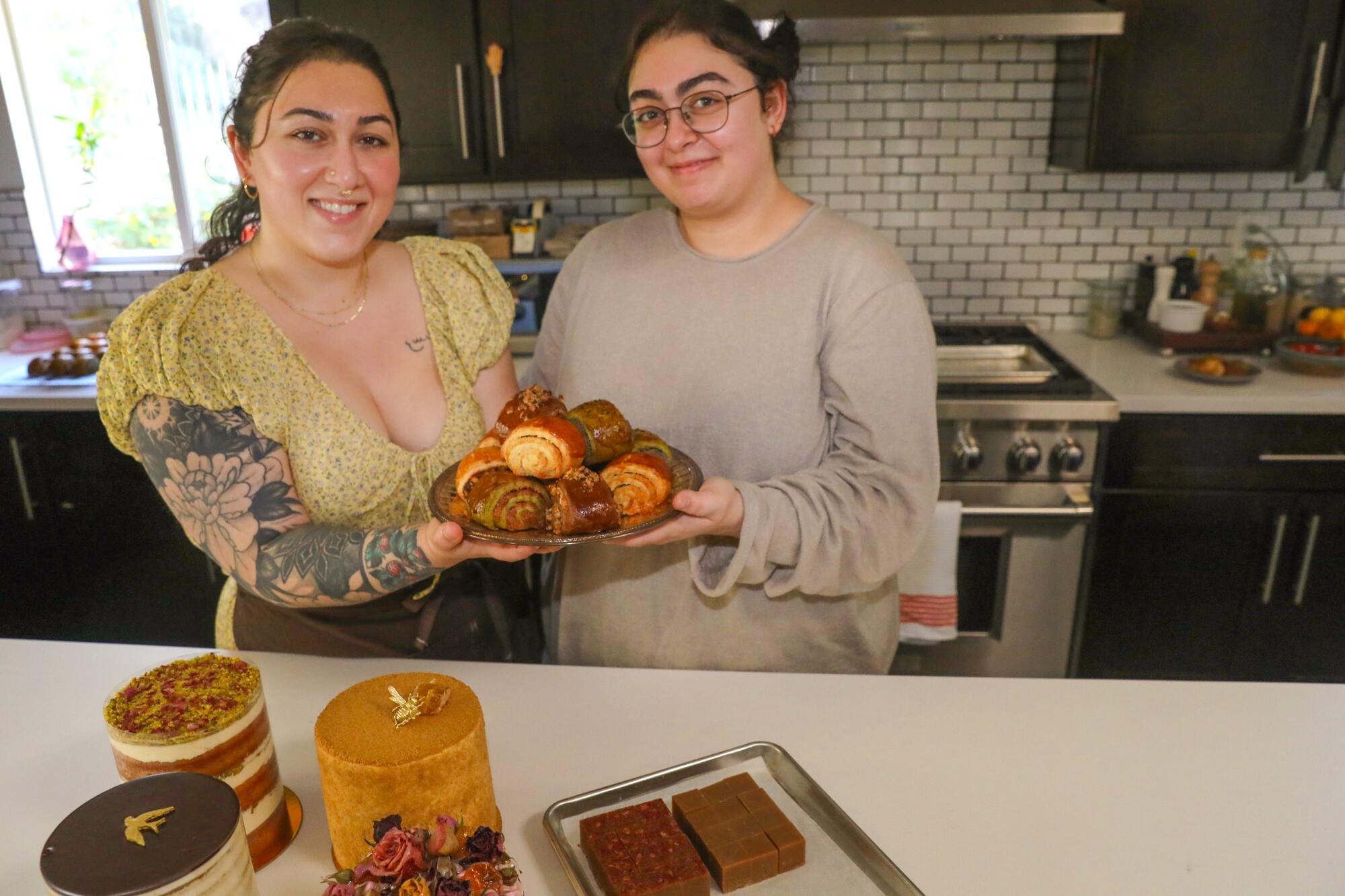
Kristine Jingozian, left, and her sister, Rose Jingozian, started the family bakery with their mother, Karine, recreating generations-old Armenian pastries and adding flavors “to incorporate other cultures into our own,” Kristine says, “because Rose & Rye “It is a diaspora project.”
(Michael Blackshire / Los Angeles Times)
Karine Jingozian opened the home bakery in May 2017 with her daughters Rose and Kristine. From their kitchen they also make Persian halva, Russian layered cakes, borek, pirog butter tarts and ashtamali, a cross between two iconic desserts (orange blossom semolina cake with layers of heavy cream and pistachios) with flavors and ingredients that are rooted in them. in California, including local olive oil, tangerines, blood oranges, black sesame, strawberries and matcha.
“I’m obsessed with matcha, I drink it every day, so I decided to add it to traditional nazook,” says Kristine. “For me it was a way to incorporate other cultures into ours because Rose & Rye is a diasporic project.
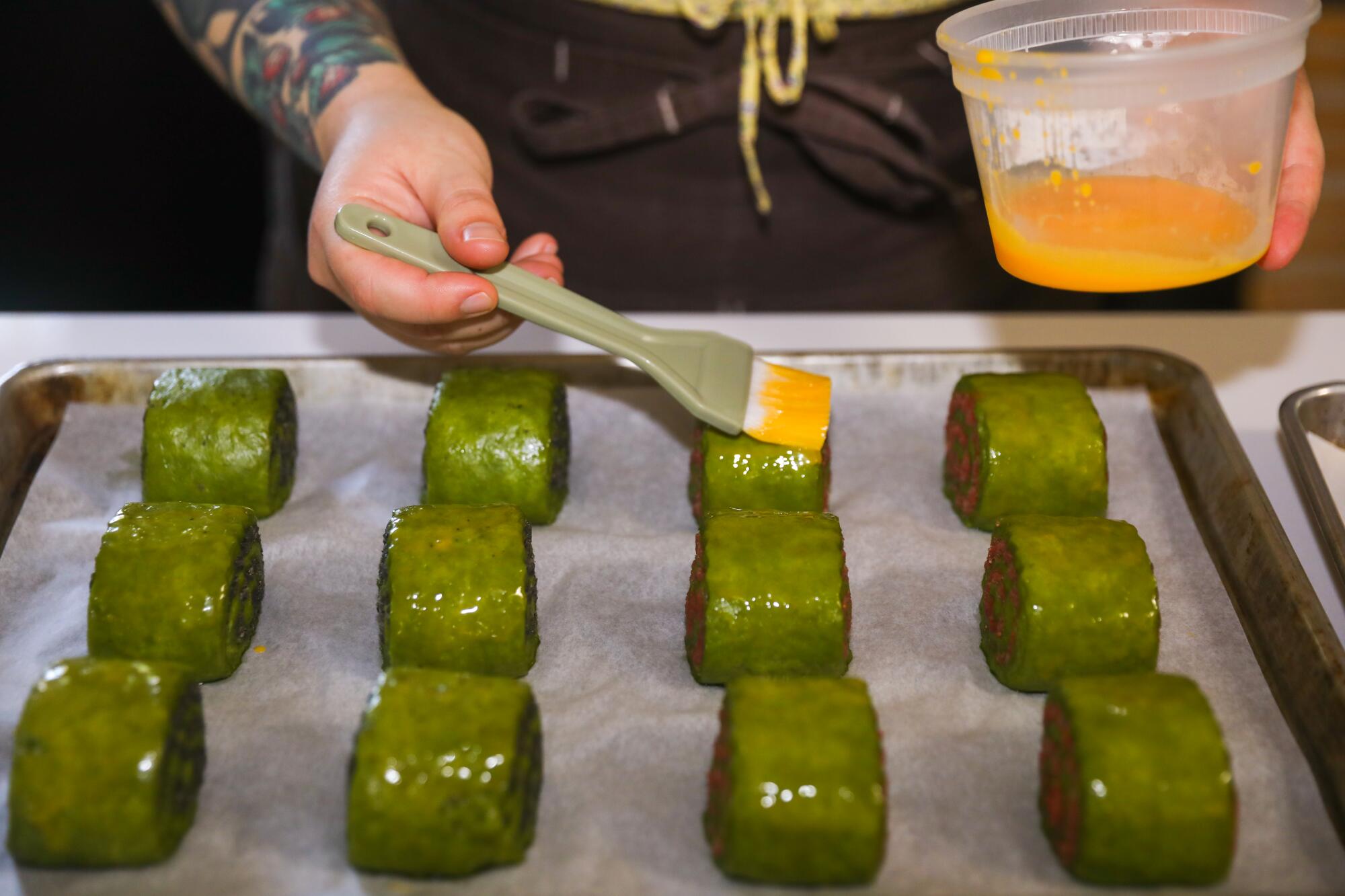
Kristine Jingozian brushes the black sesame and matcha nazook with a final egg wash before popping it in the oven. “I’m obsessed with matcha,” she says.
(Michael Blackshire / Los Angeles Times)
“Diaspora food means it’s not just Armenian: it means that wherever Armenians went they cooked and it’s Armenian food.”
The spicy smell of baking yeast dough prevails in the sparkling clean kitchen with four ovens strategically placed in different corners, allowing the family of bakers to prepare their signature cakes and cookies simultaneously.
The neat, German-made wooden mill on the counter turns grain into flour that Rose & Rye uses in baked goods. When they started their business, the Jingozians set out to work with the Tehachapi Heritage Grain Project, which grows and preserves heirloom organic grains. The project aligned with Rose & Rye’s goal of supporting the local economy and keeping generational traditions alive through food.
Food has always played an important role in the Jingozian family. Karine grew up with the vivid stories of her great-grandfather, a chef in Iran. He was known for his shakshuka, which Karine recreated for her family. After repatriating to Armenia, her family moved to Siberia and later, in 1988, to the United States.
For her 40th birthday, Karine decided to enroll in cooking school and turn her passion for cooking into a profession. In 2016, she decided to leave her job as a pastry chef in West Hollywood and bake classic French cakes with Rose. Soon, Kristine, who was working at République, joined her mother and her sister in the idea of modernizing traditional recipes and making them accessible to others outside of her community. Here’s how the century-old nazook was revamped with hazelnut, chocolate and matcha fillings.
Rose & Rye was intended to be a temporary project, but as the customer base grew, with orders for dozens of nazooks and full pies, the Jingozians expanded the menu.
It was then that the Russian honey cake of the Jingozians, medovik, was born. “The only good honey cakes I tried were homemade ones. The store-bought ones were dry, too sweet, or didn’t taste like anything,” says Kristine. So she decided to create a cake based on one from her grandmother’s recipe book as a starting point, but reworked with a flour called Rouge de Bordeaux, a hard red French wheat from Tehachapi Heritage Grain Project with a specific nutty flavor that enhances the flavor. honey .
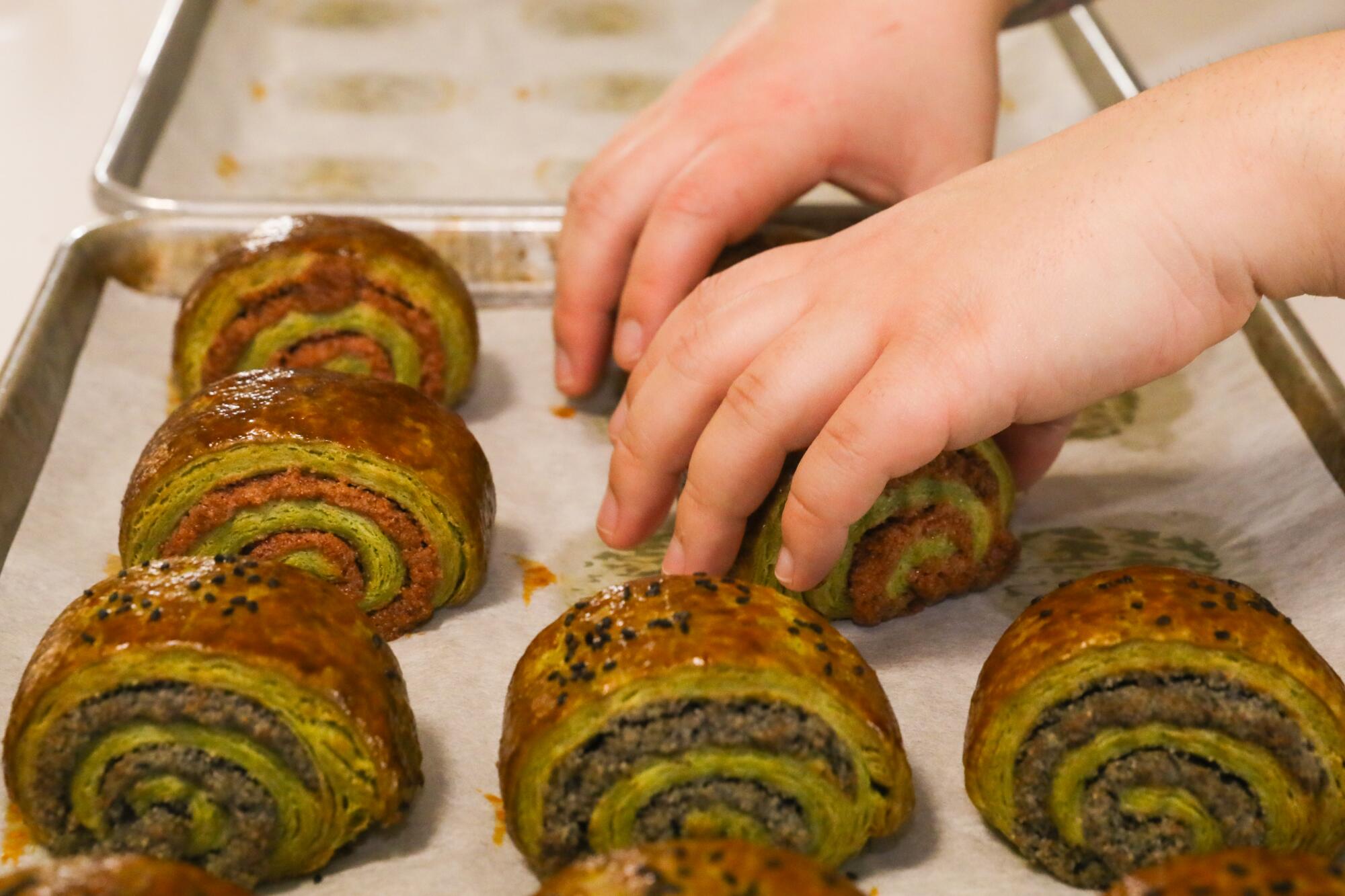
The freshly baked, golden brown nazooks are carefully packaged in boxes by the half dozen or full dozen. They are especially popular at Armenian Christmas, when families exchange sweets with relatives.
(Michael Blackshire / Los Angeles Times)
After six months of trial and error, researching 600 different recipes and an endless stream of YouTube videos, they arrived at an ultimate multi-layer honey cake with layers of honey sour cream and a little golden bee on top.
The next project was to revitalize another childhood favorite popular in Armenia and other countries under Soviet rule: bird’s milk cake with white cream between layers made with muscovado sugar and covered with a chocolate glaze.
“The way I describe this cake to non-Armenians or someone who is not from Eastern Europe,” says Kristine, “is that it tastes like untoasted s’mores.”
Weekly pre-orders for pickup at Rose & Rye they are reserved through their website. Pies by the slice are available at pop-ups in Los Angeles advertised on Instagram.

